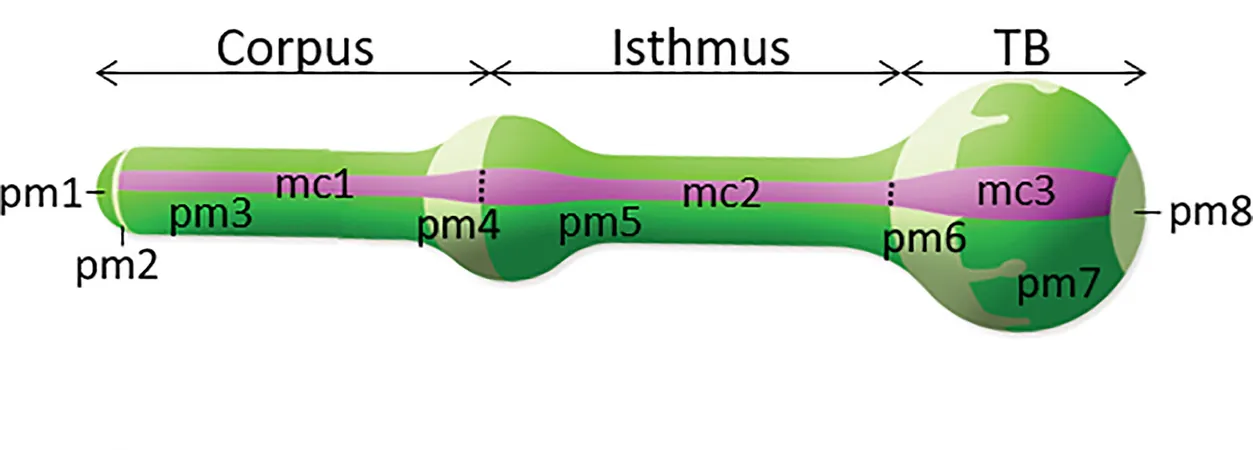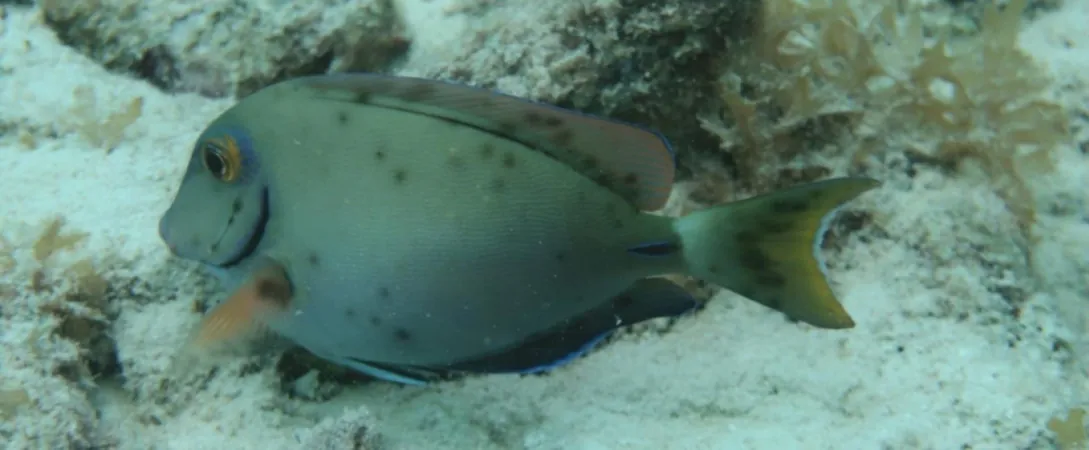
The Tiny Worm Revolution: How C. elegans is Unraveling the Secrets of Life
2024-11-18
Author: Amelia
Exploring C. elegans: The Tiny Powerhouse
In the fascinating world of biology, the humble roundworm Caenorhabditis elegans is proving to be a powerhouse of discovery, shedding light on the complexities of life that, at first glance, seem hidden within its microscopic frame. This tiny nematode, often overlooked due to its size, is at the center of groundbreaking research from the Weizmann Institute of Science, revealing how mathematical models can be instrumental in understanding intricate biological processes, such as its unique feeding mechanism.
Mathematical Modeling of Feeding Mechanism
Dr. Dana Sherman and Prof. David Harel led the charge in this innovative study by constructing a sophisticated mathematical model that simulates the pharynx, the worm's specialized feeding organ. By breaking down the worm's swallowing motions into quantifiable components, they were able to analyze the mechanics of how C. elegans ingests food at an unprecedented level of detail. The findings of this research have just been published in the prestigious Proceedings of the National Academy of Sciences, asserting the significance of these models in biological experimentation.
C. elegans: A Scientific Superstar
C. elegans, often hailed as a "scientific superstar," has contributed to numerous crucial discoveries in biology, even earning accolades, such as Nobel Prizes, for researchers utilizing this model organism. With its genome fully sequenced and a transparent body structure allowing for real-time observation, it serves a pivotal role in studies related to aging, neurobiology, and cellular mechanisms, sharing a surprising number of biological pathways with humans.
The Pharynx: A Muscle Coordination Puzzle
The worm's pharynx, which consists of muscular cells and functioning on neural signals, displays contraction and relaxation patterns that allow the intake of food particles. Through a meticulous analysis over six years, Sherman and Harel's model evaluated the timing discrepancies in pumping motions across the pharynx. While neural signals spread quickly through the organ, the resulting contractions did not follow suit, raising fundamental questions about muscular coordination and their biological implications.
Insights from 'What-If' Scenarios
In addressing why scientists would model an already evolved system, Harel explains that their objective is not to replicate nature but to achieve a deeper comprehension of its functionalities. Through this modeling process, researchers can explore "what-if" scenarios, leading to revelations of biological phenomena that might have previously eluded laboratory experiments. For example, this model offered insights into the interplay of various muscle functions within the pharynx and suggested potential roles for peripheral cells previously thought to primarily have a structural purpose.
In Silico Experiments: A New Approach
As part of their in-depth study, the researchers conducted computer simulations, known as "in silico" experiments, to examine how alterations in pharyngeal structure impacted its feeding dynamics. This computational approach has clear advantages, making it possible to manipulate conditions that would be impractical or impossible to replicate in live organisms.
Looking Ahead: Implications for Future Research
Looking ahead, the research team hopes their findings will inspire future investigations not only into C. elegans but also into the broader field of biology. With clear implications for understanding organ function across species, this groundbreaking work emphasizes the potential of mathematical models to bridge gaps in biological research.
Conclusion: Unlocking Life's Mysteries
As we continue to unveil the secrets hidden within these microscopic marvels, C. elegans could redefine our grasp on the fundamental aspects of life, paving the way for medical breakthroughs and insights into complex biological systems. The tiny worm may hold the keys to understanding life's greater mysteries—are you ready to find out how?









 Brasil (PT)
Brasil (PT)
 Canada (EN)
Canada (EN)
 Chile (ES)
Chile (ES)
 España (ES)
España (ES)
 France (FR)
France (FR)
 Hong Kong (EN)
Hong Kong (EN)
 Italia (IT)
Italia (IT)
 日本 (JA)
日本 (JA)
 Magyarország (HU)
Magyarország (HU)
 Norge (NO)
Norge (NO)
 Polska (PL)
Polska (PL)
 Schweiz (DE)
Schweiz (DE)
 Singapore (EN)
Singapore (EN)
 Sverige (SV)
Sverige (SV)
 Suomi (FI)
Suomi (FI)
 Türkiye (TR)
Türkiye (TR)